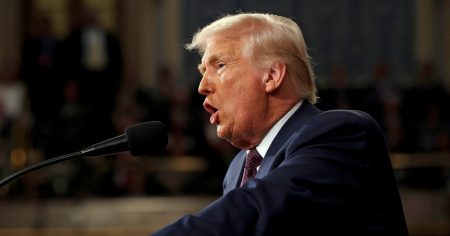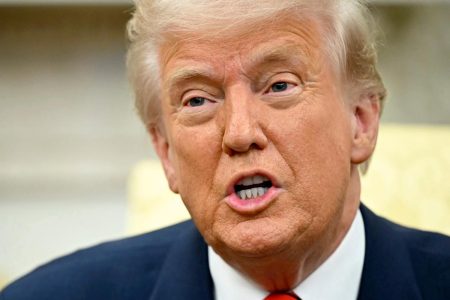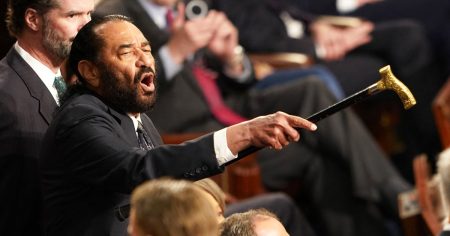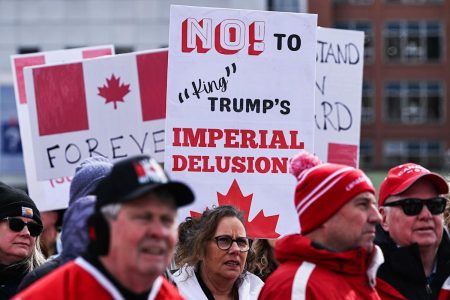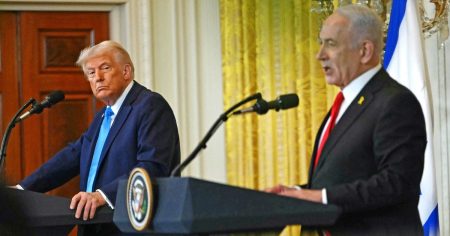President Trump’s Second Term and the Supreme Court: A Test of Power
President Donald Trump’s second term in the White House has begun with a flurry of aggressive actions, many of which are likely to end up in the Supreme Court. With three conservative justices appointed by Trump himself—Neil Gorsuch, Brett Kavanaugh, and Amy Coney Barrett—the court now has a solid 6-3 conservative majority. This dynamic sets the stage for a series of high-stakes legal battles that will test the limits of presidential power and the court’s commitment to constitutional principles. While the court has handed Trump significant victories in the past, even this conservative majority may push back against some of his most sweeping initiatives.
Key Issues That Could Reach the Supreme Court
The first few weeks of Trump’s second term have already generated a raft of legal challenges. Among the most significant are his orders on birthright citizenship, a freeze on federal grants and loans, and the coerced buyouts of federal workers. Lower courts have already paused these orders, and they may soon find their way to the nation’s highest court. Other lawsuits involve restrictions on transgender individuals, limits on asylum seekers, and efforts to shutter the U.S. Agency for International Development (USAID). Additionally, legal disputes have arisen over Elon Musk’s access to sensitive data and Trump’s firings of officials at independent federal agencies. These cases highlight the breadth of Trump’s ambitions and the likelihood of a historic showdown between the executive branch and the judiciary.
Birthright Citizenship: An Early Test
One issue that could reach the Supreme Court sooner rather than later is Trump’s order ending birthright citizenship for children of undocumented immigrants. This policy has sparked intense debate, with many legal scholars arguing that it violates the 14th Amendment, which guarantees citizenship to anyone born in the United States. While some conservative legal voices have expressed support for Trump’s position, the broader consensus among scholars—liberal and conservative alike—is that the president’s order is unlikely to survive judicial scrutiny. Jonathan Adler, a right-leaning law professor at Case Western Reserve University, has expressed skepticism about the order, saying, "I’m exceedingly skeptical about there being any votes for the birthright citizenship executive order as written."
The administration has already signaled its intention to appeal a lower court ruling that blocked the order, and an emergency appeal to the Supreme Court could come within weeks. If the court agrees to hear the case, it will mark a defining moment in the debate over presidential power and the interpretation of the Constitution. The outcome could also have far-reaching implications for immigration policy and the lives of millions of families across the country.
Federal Spending Freeze and the Limits of Presidential Power
Another major issue likely to land before the Supreme Court is Trump’s effort to freeze federal spending, which has been paused by a lower court. While the court has shown willingness to defer to the president on certain matters, scholars like Villanova University law professor Michael Moreland warn that the justices may be more skeptical of sweeping actions that appear to overstep constitutional bounds. "The court will be more skeptical, especially if the administration tries to completely unwind an agency that has been created by statute," Moreland said.
The history of Trump’s travel ban, which the court ultimately upheld after it was revised, offers some precedent. Initially, the ban was blocked by lower courts, but after two revisions, it was narrowly upheld in a 5-4 decision. This pattern suggests that the court may tolerate some assertions of presidential power but will push back against overreach. As Adler noted, "Make the broad announcement that’s a bit blunderbuss, a bit aggressive, that pushes the envelope. Then settle back to a more defensible space after pushback. It results in something more modest, but still dramatic."
The President’s Power to Fire: A Firror Ground for Trump
While the court may push back on some of Trump’s policies, the president appears to be on firmer ground when it comes to personnel decisions. Trump has already fired several high-ranking officials, including National Labor Relations Board member Gynne A. Wilcox and Equal Employment Opportunity Commission members Charlotte Burrows and Jocelyn Samuels, all Democrats. While Wilcox has sued, arguing that federal law protects her from arbitrary dismissal, legal experts say the case could ultimately lead to a Supreme Court challenge to a 90-year-old precedent known as Humphrey’s Executor. That case held that President Franklin Roosevelt could not arbitrarily fire a member of the Federal Trade Commission, a ruling that has applied to other independent federal agencies ever since.
In a 2020 case involving the Consumer Financial Protection Bureau (CFPB), Chief Justice John Roberts narrowed this precedent, and conservative justices like Clarence Thomas and Gorsuch have signaled their willingness to go even further. If the current case reaches the court, it could result in a significant erosion of the independence of federal agencies, further consolidating presidential power. As Moreland put it, "If I had to speculate, I’d say it would be—if not outright overruled—at least severely constrained."
The Evolution of the Supreme Court and Its Implications
The Supreme Court that will hear these cases is fundamentally different from the one that ruled on similar issues during Trump’s first term. The death of Justice Ruth Bader Ginsburg in 2020 allowed Trump to appoint Amy Coney Barrett, giving conservatives a 6-3 majority. This shift raises questions about whether the court will continue to check Trump’s most aggressive actions or whether it will rubber-stamp his agenda.
In his first term, Trump experienced a mix of victories and defeats at the court. The justices upheld his travel ban and allowed the administration to divert Pentagon funds for a border wall, but they also blocked him from ending the Deferred Action for Childhood Arrivals (DACA) program and including a citizenship question on the 2020 census. Chief Justice Roberts played a key role in these decisions, sometimes siding with the court’s liberal wing to rein in Trump’s ambitions. However, with Barrett on the bench, Roberts may no longer be the swing vote in many cases, potentially giving conservatives even greater latitude to shape the law.
The Broader Implications of the Court’s Decisions
As the Supreme Court prepares to weigh in on these high-profile cases, the stakes could not be higher. The decisions the justices make will not only shape the trajectory of Trump’s second term but also set important precedents for future presidencies. At its core, the coming legal battles will test whether the court remains committed to upholding constitutional principles or whether it will allow the accumulation of presidential power to go unchecked.
Michael Waldman, president of the Brennan Center for Justice at New York University, captured the gravity of the moment when he said, "It will be an extraordinary test for the Roberts Court whether it’s willing to stand up for constitutional principles it has long embraced." The court’s response to Trump’s actions will have far-reaching consequences, shaping the balance of power in Washington and the lives of millions of Americans for years to come.



